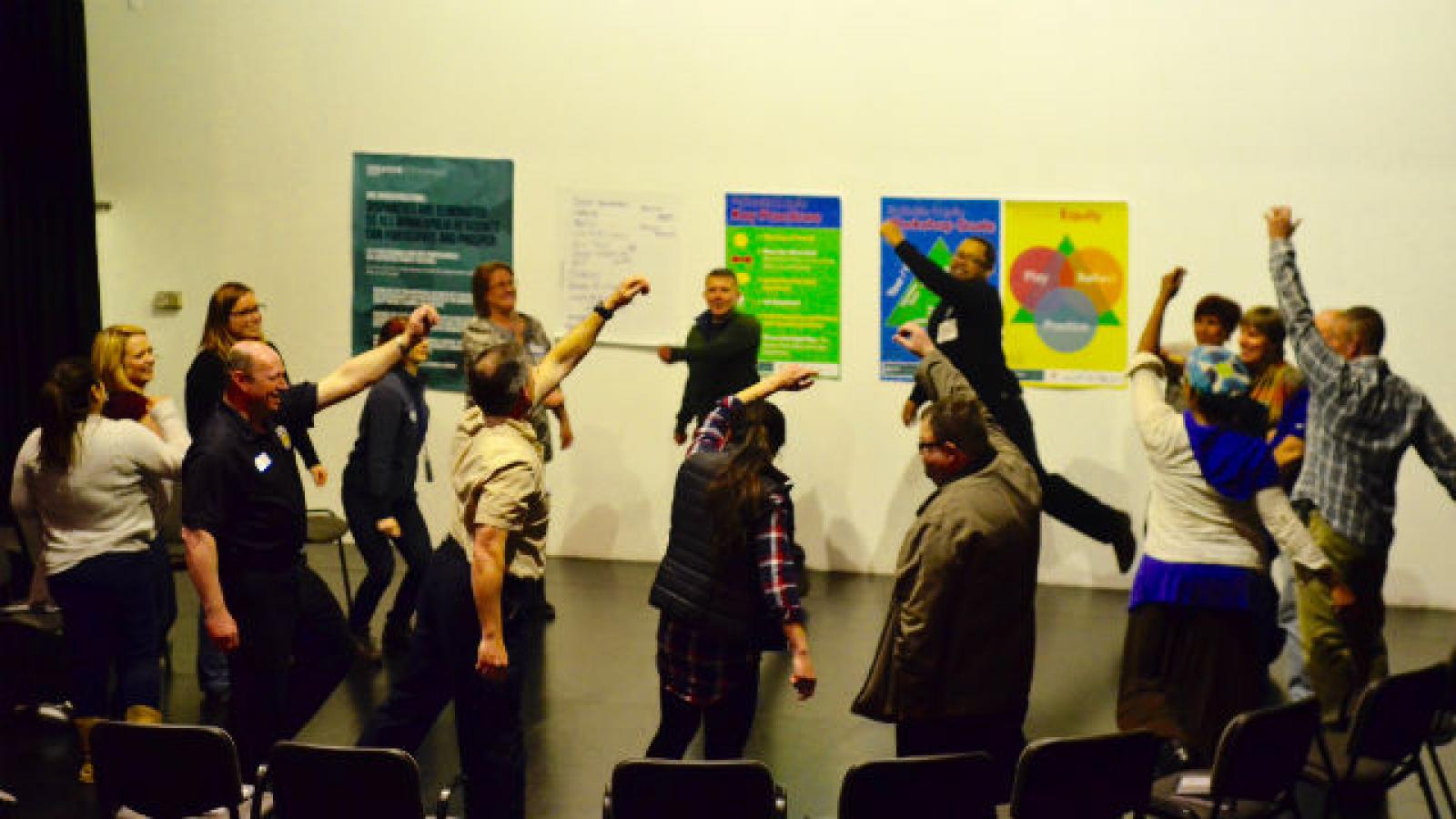Spotlight on Creative CityMaking Minneapolis

Some of the most exciting creative work taking place in the country is not seen on stages, in concert halls, or museums. It is happening in city administrative offices, in departments of long-range planning, community relations, transportation, and others. There, artists are using their expertise to help solve problems, expose misperceptions, and help make the city work better.
A prime example is Minneapolis. There, the city’s Arts, Culture, and the Creative Economy Program is leading the Creative CityMaking Minneapolis project, in collaboration with Intermedia Arts. Begun in 2013, the NEA-funded initiative fosters collaborations between community-engaged artists and various city departments. The goal is to help the city develop new tools and strategies to better serve and engage with local communities, particulalry those affected by economic and racial disparities.
Gulgun Kayim, director of the Arts, Culture, and Creative Economy Program, notes that the arts help people translate across differences, and ultimately generate more informed policies and a city that works for everyone. In her own words below, Kayim talks about a recent experience with the city’s Regulatory Services Department, its staff inspectors, and the tenants they serve.
----------------------------------------------------------------------------
The Regulatory Services Department said that they were really interested in connecting with underserved and underrepresented tenant communities so that department policies were better aligned with the interests of those communities. This would help the department better understand their needs, assist the tenants’ landlords better understand their rights, and help the inspectors enforce housing code and regulations. The artist team of Mankwe Ndosi and Reggie Prim spent a considerable amount of time learning where they would fit in with the department’s outreach. In the process, they actually re-framed the project. The artists discovered that many inspectors had been worn down by constant, negative community interactions that affected their perceptions of those they serve. As a result, the artists said, “We think we need to get some skills under your belt to be able to be receptive to the community that you’re going to engage.” So, the artists went deeper than we originally expected and were more thorough with their approach. So they started to do Theatre of the Oppressed work with the inspectors. [Theatre of the Oppressed is a theater technique that features participatory activities designed to create cooperative interactions.] They began to dismantle what the inspectors were experiencing, helping them utilize their own creativity about how the inspectors could apply the rules. Working Within In the process, artists also worked to address some of the issues within the department. Why were the inspectors feeling stuck? Why were they not feeling supported? There were actionable observations about department communication and processes raised through Theater of the Oppressed processes that could help the department with its own staff. Finally, the inspectors had uneven perceptions of the disparities faced by communities of color who make up a majority of the tenants the project was focused on reaching. The artists recognized that it was important to get people out of their heads because it’s difficult to argue with people based on data and on the level of cognition. They will always find data to support their perspectives. But getting them into a less cognitive place through Theatre of the Oppressed work was a more effective way to engage around these issues, encouraging the inspectors’ own creativity around how they’re thinking about policy, code, and their flexibility about racial equity, their ability to touch their own humanness and say the community is human too, even though you may have walked into a facility that’s been neglected, to see it with different eyes. Now, the artists are going to do outreach with tenants as a small group to pilot a process to help build the tenants’ capacities and hear how current policy is impacting them and increase understanding of what the regulatory environment looks like from their perspectives. I have to say it’s very impactful work. It transforms people. And now the entire Regulatory Services Department, not just the inspectors, wants to take the training. Things We’ve Learned First of all, we learned that you’ve got to bring artists into this work early, while you are still in the planning phase. You’ve got to think about infusing your entire process with artistic engagement. Often, people silo artists to particular places in their project. So don’t just gather data using artist processes; also share data using artistic processes to tell the community what you heard in a way that they can understand. We also took creative processes a step forward. We said, 'What if we use creative processes to actually collectively analyze the data we gathered?' And we did. We called them Data Jems, pattern-spotting which is what analysis is. We created engagement processes to bring communities in to help them look at the information we gathered and asked what do you see? So creativity and community engagement has been threaded throughout our process. We’ve learned a lot and we continue to refine and iterate. I can also say that it’s really important that there is an entity within the city that’s holding the space for this to happen. That is the role of Arts, Culture, and the Creative Economy office. In government, we work constantly in the public eye, and that actually prevents innovation because people become averse to criticism and taking risks on doing things differently. So in order for departments to find new ways to do their work, they need to be free to innovate. So my office found resources and grant money to support the work of artists and departments. Once you have found something that works, the city needs to invest. That’s our approach to the work.



